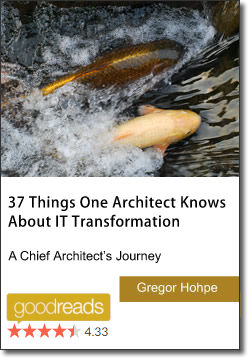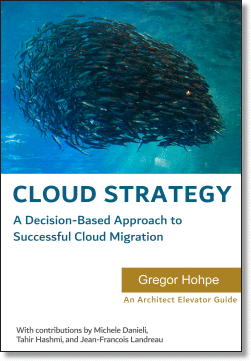Technology books can dive into detailed content and still be engaging to read. That’s what I am aiming for when I translate my experiences from the trenches of large-scale architecture and transformation into advice for architects and IT leaders. Supported by engaging anecdotes, readers strengthen their architectural thinking while enjoying the read. Many positive reviews on Goodreads suggest that readers agree and motivate me to keep writing this way.
The Software Architect Elevator
 Being an architect is no longer about drawing UML diagrams and studying architectural styles. Rather, today’s most valuable architects modernize the organization’s way of working along with its technology stack. Steering clear of buzzwords, these architects tackle complexity, bring transparency, and make better decisions. They do so by riding the Architect Elevator: they forge the much-needed connection between the organization’s business strategy and the IT engine room, where the enabling technologies are implemented.
Being an architect is no longer about drawing UML diagrams and studying architectural styles. Rather, today’s most valuable architects modernize the organization’s way of working along with its technology stack. Steering clear of buzzwords, these architects tackle complexity, bring transparency, and make better decisions. They do so by riding the Architect Elevator: they forge the much-needed connection between the organization’s business strategy and the IT engine room, where the enabling technologies are implemented.
This book shows you how to ride the architect elevator to the upper floors. Structured into 41 engaging episodes, it prepares IT executives, enterprise architects, and software architects for a more exciting role or the next step in their career. 4.8 stars on Amazon!
Buy on Amazon (Paperback or Kindle) ♦ Read on O’Reilly Learning Platform (free trial)
Note: This book is an updated and expanded version of 37 Things One Architect Knows. It contains five new and several substantially reworked chapters.
Platform Strategy – Innovation through Harmonization
Developer platforms appear to be able to rewrite the laws of IT physics: they boost innovation despite (or perhaps due to) standardizing; they speed up developers while assuring compliance; and they reduce cognitive load without restricting choice. As one might guess, building such an in-house platform, or even deploying one, is far from easy. This book provides valuable guidance for organizations on a platform journey.
The second installment in my IT Strategy Bookshelf takes the Architect Elevator all the way from the business strategy down to implementation decisions and architecture trade-offs.
DRM-free ebook ♦ Cloud and Platform Strategy Bundle ♦ Hard copy on Amazon
Cloud Strategy – A Decision-based Approach to Successful Cloud Migration
When I developed a cloud strategy for a major public sector client, we found that most available books were either very high-level or product-centric. So, I wrote this book to fill the giant gap in between.
This book condenses a decade of elaborating cloud and IT strategies into vendor- and product-neutral guidance that’ll allow you to rethink your current IT setup and your journey to the cloud. Emphasizing depth of thinking over arcane technical details makes the book approachable and valuable to a wide audience, ranging from architects to IT decision makers. Before you define your strategy, read this book first! Rated 4.54 on Goodreads!
DRM-free ebook ♦ Hard copy on Amazon [UK] [DE] ♦ Deutsche Übersetzung ♦ Korean Translation / 한국어 ♦ Japanese Translation / 日本語 ♦ More Info
The Classic: Enterprise Integration Patterns
 Still relevant 17 years after publication, EIP established the base vocabulary for most modern message bus and API gateway software. It highlights the complexity of building distributed, asynchronous solutions but at the same time offers an intuitive visual pattern language to aid with their design. Like all good patterns books, it harvests the learnings and pitfalls from real-life experience and structures them into a cohesive language.
Still relevant 17 years after publication, EIP established the base vocabulary for most modern message bus and API gateway software. It highlights the complexity of building distributed, asynchronous solutions but at the same time offers an intuitive visual pattern language to aid with their design. Like all good patterns books, it harvests the learnings and pitfalls from real-life experience and structures them into a cohesive language.
While the patterns also apply to microservices and serverless applications, the examples are at best of historic value. I therefore posted contemporary examples. Also, the long-time-in-the-making Conversation Patterns are available as work in progress.
37 Things One Architect Knows About IT Transformation
 This book evolved into The Software Architect Elevator
This book evolved into The Software Architect Elevator
Packed with anecdotes from real-life IT transformation, this book prepares IT leaders, architects, and lead developers for a more rewarding, but also more ambitious role in the enterprise that spans all the way from the penthouse to the engine room and answers questions like: What’s expected of architects up in the penthouse? How to get there in the first place? What’s to be done at the individual floors? And how does one get back down?
Buy on Leanpub ♦ More Info ♦ Chinese Translation


